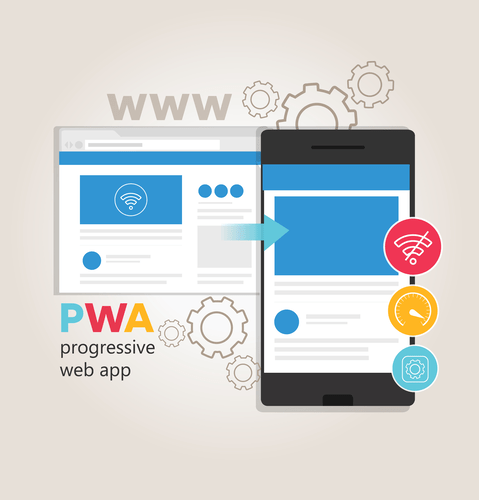Content
Spacelift is an alternative to using homegrown solutions on top of a generic CI. It helps overcome common state management issues and adds several must-have capabilities s for infrastructure management. Each organization will have its own requirements when making the shift or starting its journey to the cloud. In order to avoid costly and time-consuming bad decisions, it is critical to understand the organizational needs before embarking on the journey to the cloud.
Exploit the continuous release of features and services by CSPs, incubate new technologies and innovate digital business models. Lot of companies are not keen on deploying software often due to downtime issues. They prefer to follow https://globalcloudteam.com/ frequent testing and beforehand preparation as best practices. To limit the risk that comes with new deployments, companies should go with an approach where deployment of software happens only to a small fraction of users first.
Cloud Solutions Provide a Competitive Advantage
Cloud Optimization A holistic end-to-end solution for optimizing your cloud spend and supporting Cloud FinOps programs. If you are attempting to access this site using an anonymous Private/Proxy network, please disable that and try accessing site again. When expanded it provides a list of search options that will switch the search inputs to match the current selection. It offers a collaborative space that allows clients to enhance their efficiency.
As a result, your business can capitalize on productivity, resource utilization, and cost efficiency. Having your own private cloud also lets you control how data is shared and stored. This is often the best option if cloud security is a concern, since you can manage data governance, ensure compliance with any regulations, and protect valuable intellectual property. If you’re looking for the most control over your resources and data, as well as the most cost-efficient solution over the long term, a private cloud is most likely your best choice. However, there are some workloads that simply won’t work in the public cloud—for example, legacy applications that are too difficult or risky to migrate.
Enterprise Services
Community clouds are cloud-based infrastructure models that enable multiple organizations to share resources and services based on standard regulatory requirements. It provides a shared platform and resources for organizations to work on their business requirements. This Cloud Computing model is operated and managed by community members, third-party vendors, or both. The organizations that share standard business requirements make up the members of the community cloud. To make the most use of this computing type, a company should opt for a model that suits it best.
The private cloud deployment model is also known as the internal or corporate model. Workload centric approach – in this approach you analyze every workload to determine the most suitable cloud computing deployment model. You need to take into account multiple factors, including technology fit, operational fit, and cost. Rackspace, in partnership with HPE, offers a pay-as-you-go model for its private cloud, charging end users on a service-to-service basis. The popularity of this pricing model is growing due to rapid expansion in the cloud-based infrastructure market, fostering the need for a more flexible and efficient pricing model. As mentioned, operating a private cloud on premises is generally more expensive upfront than using a public cloud for computing as a utility.
Securing Cloud Computing Systems
Small and medium-sized businesses that have limited resources may opt for the public cloud, while large enterprises that have strict security requirements may opt for a private cloud. Organizations that require a combination of security and scalability may opt for the hybrid cloud, while organizations that have similar computing needs may opt for the community cloud. A company might choose to have their cloud infrastructure on premise or hosted at a data center. The systems that run on a private cloud are designed and maintained by the company’s own staff. This means that the company that runs a private cloud must have technical staff on hand to assist with any issues that come up during the operation of the private cloud.
- In a hybrid model, companies can use their existing public cloud and also own on-premises systems.
- This particular component eliminates complex licensing dependencies, making the cloud services provision rather simple and swift.
- PaaS eliminates the need to manage the complex infrastructure of hardware and operating systems.
- You will have a ready-to-use platform – for instance, managed Kubernetes or Kafka.
- The applications can be accessed through any device with an internet connection.
- A private cloud is hosted in your data center and maintained by your IT team.
- Private clouds can also be expensive; often, when a business owns its private cloud, it bears all the acquisition, deployment, support and maintenance costs involved.
Private clouds are often deployed when public clouds are deemed inappropriate or inadequate for the needs of a business. For example, a public cloud might not provide the level of service availability or uptime that an organization needs. In these cases, an enterprise might opt to invest in a private cloud to realize the benefits of cloud computing while maintaining total control and ownership of its environment. A private cloud is a single-tenant computing infrastructure and environment, meaning the organization using it — the tenant — doesn’t share resources with other users. Private cloud resources can be hosted and managed by the organization in a variety of ways.
What is Cloud Deployment
Public cloud is the most commonly used cloud deployment model in which you don’t own any hardware. All the resources – virtual machines, applications, storage, etc. – are made available to you on a subscription basis. You can gain access to these resources for free or through a pay-per-usage model. Since public cloud services are set up as pay-per-use, there’s minimal investment to get started. They’re also easy to scale, since you can simply buy more capacity as it’s needed.
Decision-makers must factor in computing and business needs, and they need to know what different deployment types can offer. Simple Environments.Most organizations have specific requirements for tailor-made services. Many cloud platforms offer only simple functionality with little to no customization opportunities. Azure Stack helps build and run applications types of cloud deployment models across data centers and edge locations to remote offices or even the public cloud. IBM. IBM offers private cloud hardware, along with its Cloud Managed Services, cloud security tools and cloud management and orchestration tools. HPE. The vendor’s GreenLake offering provides a set of cloud services compatible with VMware, OpenStack, SAP and other components.
Private Cloud Model
You will have a ready-to-use platform – for instance, managed Kubernetes or Kafka. You can have as many applications as you want but you are limited to one particular platform. This type of multi-tenant data center infrastructure helps groups of companies which have uniform security, privacy and similar performance requirements. It also improves the efficiency and smooth workflow of these participating companies in case of joint projects. With the help of centralized cloud, project development, maintenance and deployment can be managed well, and cost will be divided amongst the companies.


